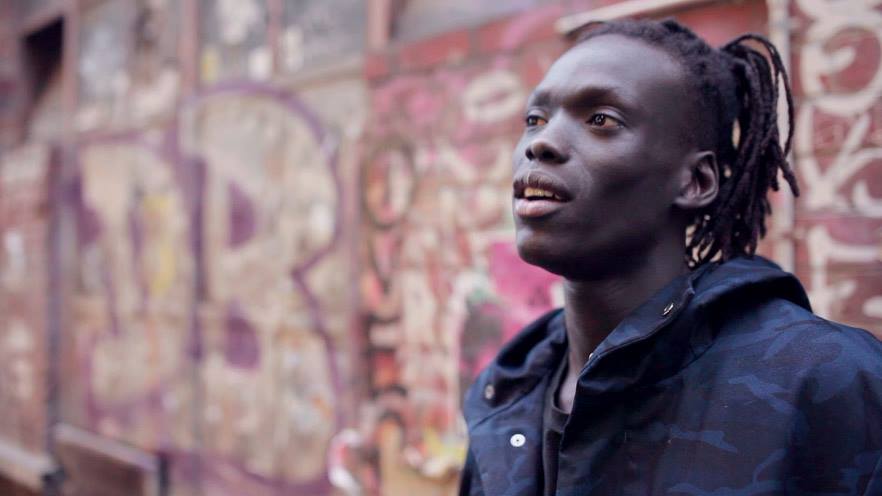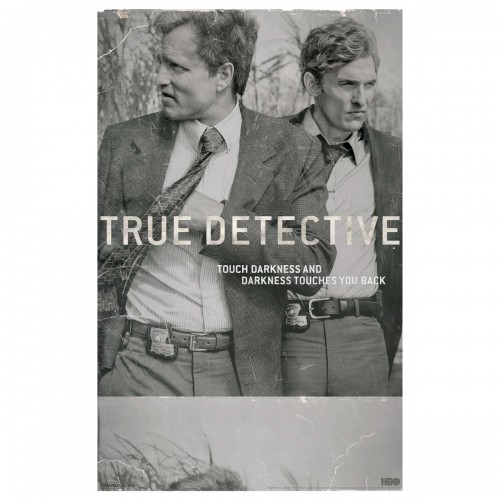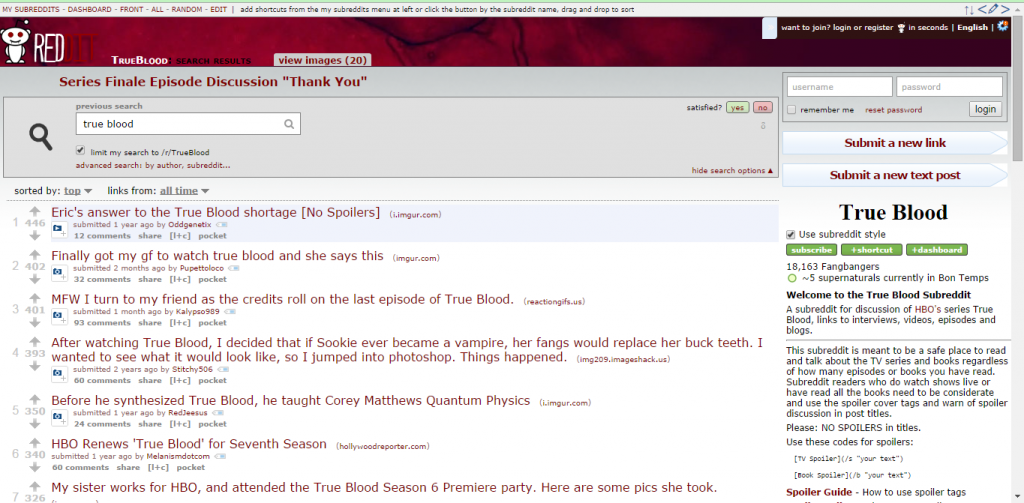Oct
26
Colour Correction. (Film/TV 2 Analysis & Reflection 5)
October 26, 2014 | Uncategorized | Leave a Comment
As per lecture – in a sequence you’ve called ‘colour’ you will have clips that are indicative of a particular colour or lighting state. To the right of that clip you will have that same clip repeated 2 or more times with different colour grades on it.
Take screen grabs of each clip then upload to your blog the series of stills that show us ‘before and afters’ of your colour grading. Provide a few different examples of at least two different clips – each with a description of what you did to the clip and why.
This is a learning exercise, not necessarily a qualitative one, don’t stress – it is the act of doing it and the reflection on that, that is important
In this still, we could see too much blue hue in the lighting. This is because we were shooting this scene close to sunset and the rapid change of the amount of sunlight throughout the entire shoot caused the temperature to be not balanced.
To fix this, we simply increased the temperature and our subject looked more natural.
In this still, the contrast looks a little bit out of balance.
By fixing the contrast, not only do the shot look more appealing, the skin tone of our subject got much better as well. Making him stand out even more against the background.

Oct
26
Film/TV Analysis 5 Question 2.
October 26, 2014 | Uncategorized | Leave a Comment
In the beginning of the semester, I had a couple of goals and expectations set:
Goals
– To challenge myself do something I’ve never done before in Film 1.
– To take away at least one lesson that is valuable for me from the course.
– To contribute more to the team compared to Film 1.
Expectations
– To have a professional but enjoyable process throughout the entire project
– To observe and learn from other team members
– To have little to no drama within the production team.
In hindsight, I’d say that I had some hit and miss throughout the semester. My first goal was to challenge myself to do something different this semester, but I stuck to doing something that I’m comfortable with which was being the sound manager; a role I took up last semester as well. I did not achieve the main point of this goal, but at the same time I did take a secondary role as the assistant editor and I felt that was a good exposure to me as I learned a lot of new editing techniques from my fellow groupmate and chief editor Bryan to add on the the existing ones that I already knew.
I also managed to contribute much more than I did to my team compared to in Film 1. I put more effort into designing the sound for the entire film and looked high and wide for great royalty-free music to help enhance my team’s film. I also put more time aside to work on the editing on the film with Bryan, I felt that with both of our minds together we pieced the film together much more effectively. Overall, I am very satisfied with how I improved in this area this entire semester.
In terms of my expectations, I am happy to say that I have met all of them. My team was fairly professional in terms of our role distribution and how conduct ourselves during the production process, but at the same time we all had tons of fun during the entire thing. We’re near the end of the journey now and it feels pretty sad to me because all of us have become close friends throughout the entire semester and half of us are graduating. This was by far the most enjoyable group I have ever worked with, and we still manage to get things done effectively amidst all the silly pranks and laughters.
By working closely with Bryan, as mentioned above I managed to learn a lot of things from him, which met my second expectation. While the post-production process was where I learned the most from my other team members, I managed pickup a few lesson during the production stage as well by observing how my team members work. Overall I think it was a fruitful learning process for all of us as we learned a lot of things from each other.
One thing that I was really glad about this semester was there was little to no tension among all of us during the entire process. We communicated very well and were very patient with each other, all of us didn’t mind standing in for each other when one of us couldnt make it or was having difficulties. We had very good teamwork and I was very happy with how our group turned out to be.
Lastly, the most valuable thing that I took away from this entire semester was that while it is important to be as professional as you can during projects like this, we should look to enjoy ourselves and form friendships and bonds at the same time too. I cannot imagine how this entire project would have been if we merely wanted to get things done and over with and did not bother to bond with one another, because the entire process was so enjoyable and we had almost no stress at all approaching this assignment. It didnt feel dreadful or tiring to me each time we met up as a group, and we met a LOT of times this semester. This leads to us being highly productive and increased the quality of our work. The lesson here is while the results is important, friendships adds even more quality to not just the end results, but to the entire journey as well.
Oct
24
Technostalgia: A Look Back Into Technology
October 24, 2014 | Uncategorized | Leave a Comment
Oct
22
Journal Post #6
October 22, 2014 | Uncategorized | Leave a Comment
True Detective and the complex narrative
There has been multiple shows following the crime genre that preceded True Detective. Most of them popular, but were not quite as successful as what True Detective achieved in just one season despite being the same genre. How is that so? Easy, it is all in the narrative.
Crime shows like CSI, and Law & Order are popular because they engage their audiences with episodic journeys; stories that starts and ends at the same episode. Viewers don’t have to wait a whole week to find out who’s the killer, only to be made to wait for another week. These shows have no cliff-hangers since whatever crime that happens in an episode, are solved in that episode and viewers who are looking for to binge-watch TV shows dig these. But the downside of these shows is that they all have cheesy narratives, plots are annoyingly predictable, characters are too unrealistically smart, and the crime solving technologies used are ridiculous.
So ultimately, viewers who loves the crime genre, but cannot deal with the predictable and cheesy narrative of popular crime shows back then had nowhere to go for a show that both has both crime and quality stories in its package. Then came Nic Pizzolatto, who saw an opportunity in this market and introduced True Detective, the show which took the entire crime genre by storm. We learn that the show’s comprises of a complex narrative because it is thrown in our face in first episode of the first season. In the first episode, we the audience are constantly brought between series of scenarios that are happening at present to scenarios that happened in the narrative’s past, a viewer who does not pay their full attention to the show would have probably gotten lost in the first ten minutes. Not only that, subtle clues and meta narratives are placed in every episode of the show to point the viewers to the right direction to figure out the identity of the show’s serial killer. A viewer with a keen eye would be able to spot all these little easter egg-like clues, piece them together, and come up with their own theories on the the identity of the killer. Not only can the viewers watch and enjoy the show for what it is, they can play detective and be involved in the show’s narrative too. Therefore, shows like True Detective with a complex narrative demands high engagement from the viewers and keep them at the edge of the seat. Not paying attention means losing track of the narrative and having to play catch-up.
We see networks like HBO who are applying this formula into their shows, and to great success. Complex narrative is slowly becoming one of the main criteria for shows to be classified as Quality TV, and we can see why. The engaging narrative that demands the viewers’ attention, and the subtle placements of easter eggs and clues/hints that drives the narrative in its own way leave viewers wanting more of them as the weeks go on. You can not just watch one episode of True Detective and leave it at that, you will want to keep watching to find out more and more on the identity of the killer. Every week is like opening a box of chocolates to find out what you are going to get, and we are never left disappointed, only wanting more.
Oct
22
Journal Post #5
October 22, 2014 | Uncategorized | Leave a Comment
Anthology series, the new standard of Quality TV?
Lately, we’ve been seeing more and more anthological TV series like ‘Fargo, ‘American Horror Story’, and ‘True Detective’ coming into the scene, and with huge success. These shows are racking up considerable acclaim and prestigious awards. What makes these shows so successful? I believe there are a few factors related to these shows being anthological at play.
Being anthology series, these shows tell a different set of story with different set of characters for a season consisting of ten episodes, practically making the season into a 10-hour long movie with breaks in between. Running the series this way opens up a lot for space for the writers to work on. For one, they do not have to commit to one story for the entirety of the show’s 3-7 seasons. This frees the series from the risk of losing its plot halfway through the season and losing it’s quality. Shows like Lost, Heroes, How I Met Your Mother, and True Blood started off really strong and attracted a lot of viewers with it’s first season, but when they reached their 3rd or 4th season they started to receive criticism because of the story being dragged and stretched out too much, thus slowly losing much of the quality that it has presented with its engaging storyline from its pilot. This will not happen for an anthology series because they wrap up their story in one season. The only risk is that their viewers might complain that the story the loved was too short-lived but personally, I’d rather be left hungry for more than losing love for something because it has been too dragged out. Another risk that this kind of series are exposed to is that a show’s new season may not be as good as the previous ones.
Other than that, Anthology series are attracting more and more talents from Hollywood to add to the quality of the show. Having Hollywood big names associated with the show not only does well in marketing the show and attracting viewers, the experience and acting skills from them enhances the quality of the show’s presentation as well. A great example is True Detective, while the main plot of the show is engaging, the show mainly received wide acclaim for the quality of acting that was presented in it. Who were the actors? Matthew McConaughey and Woody Harrelson; both household names in modern Hollywood. Hollywood stars are more likely to sign on to these shows because they only require a short-term commitment from them, making the TV talent pool much bigger than before. Another reason why anthology series are so popular right now is because of the way TV is consumed today. With the introduction of platforms like Netflix, it is easier to binge-watch these shows. Ten episodes in the Netflix queue is definitely less daunting than a hundred episodes.
These factors are perhaps why anthology series are so popular right now. Big networks and producers are starting to push for this genre following the success of True Detective and Fargo. The flexibility it offers to both the creators and actors in terms of both creativity and commitment the emergence of the online TV platform helps create quality shows that are looking very likely to engage and maintain the audience’s loyalty from season to season.
Oct
22
Journal Post #4
October 22, 2014 | Uncategorized | Leave a Comment
This journal post addresses the question asked in week 6’s lecture:
Have ‘fannish modes of engagement’ become mainstream in contemporary television culture?”
I think it has become mainstream, but it is not at all a bad thing in my opinion. I think the line between knowledge culture and fan culture are becoming thinner as technology becomes more advanced especially in terms of the internet. While there are still sites that are dedicated purely to the notion of fandom It is much easier now for people to get educated with a particular show that they love because of how easy it is to access information about them in the internet. The internet has become a new knowledge space accessible by anyone with an internet connection.
With the availability of sites such as Reddit, an entertainment, social networking service and news website where registered community members can submit content, such as text posts or direct links, fans are able to discuss theories and facts about the show they follow by creating a specialised section in the website called “subreddits” that are dedicated to that particular show. –
Through this medium where knowledge culture meets fan culture, individuals demonstrate their competency of their knowledge on these shows by contributing the the “threads” started by other fans of the show. A particular thread may start off with a topic on fan-based theories, and fans get to demonstrate their grasp on the elements of the show by presenting their own theories based on the ques that they have observed from either the show’s plot, or its mise-en-scene.
On the surface, these simple threads may appear as nothing more than an act of fandom. But in actual fact they are much more than that. In this particular thread, fans discussed on the whole issue on True Blood losing the qualities of Quality TV. It is a good example of fans coming together and using their knowledge to discuss on the topic. With threads like this, less knowledgeable fans are able to learn more about the show simply by scrolling through the hundreds of comments and opinions posted by other members. On top of that, these threads are way more relatable to less cultured fans compared to reading through an entire academic article. Thus creating a much simpler and understandable knowledge space, but at the same time maintaining an adequate form of literacy. Nevertheless, this site caters to fandom as well. For example, this thread shows a fan using photoshop to give others a glimpse of what it would look like should the show’s plot go a certain direction. But this is a lighthearted act of fandom compared to other more fan-dedicated websites that has contents like fan-made fiction, fan-made art and so on.
Fannish modes of engagement have become mainstream not because knowledge culture are fading, in fact it is because knowledge culture are being more and more integrated with the internet with the existence of things like subreddits and discussion threads. Of course if cultured fans want to differentiate themselves from the non-cultured, that world still exists; likewise for fans purely dedicated to fandom. But this integration means there is now a common ground for both cultures to engage with each other. Non-cultured fans can be educated about the show from cultured fans; whereas cultured fans are able to enjoy casual and creative contents that are made for fandom. Now fans can get the best of both worlds.
Aug
27
Journal Post #3
August 27, 2014 | Uncategorized | Leave a Comment
Twin Peaks
Created by David Lynch, Twin Peaks came crashing into the TV industry, and it was a phenomenon. It was mainly a hit because it was different, a fresh medium for TV viewers.
Shows in the 80s followed a typical set of formula for success, similar set of storyline, clearly defined heroes and villains. These shows were entertaining, no question, but they were never shows that challenged viewers and kept them guessing. These were shows still routed in the ordinary, focusing on institutions that exist. Twin Peaks on the other hand played with weirdness, mystical elements, and can sometimes be downright creepy. At the same time, the show also plays out the soap opera. Affairs, the return of old flames, and fights over the ownership of a mill occur alongside alien abductions, possessions, and alternate dimensions. There were never any shows that would come close to as unique Twin Peaks was, and at a time where things were still relatively conservative the show challenged the rest of the TV industry to do something original and exciting.
Twin Peak’s strength was no doubt in its aesthetics, especially the whole mystery element that the show introduced. But this aesthetic also proved to be the undoing of the show. The mystery element of the show (who killed Laura Palmer?) did a great jo TV b creating a hunger in the viewers for answers. People discussed, created theories on the real killer, and tuned into the show every week faithfully in hopes that they will be rid of their appetite for an answer. But as the season ended after eight episodes with no answer, people were frustrated, but they still wanted to find out who’s the killer. The show’s popularity and lack of closure easily signed them on for a second season. But in the second season, viewers became more irate and impatient with the writers and demanded the reveal of the killer. Although Lynch initially intended for the mystery to go unsolved, for viewers to enjoy the journey rather than focusing on the destination, ABC finally gave in to the pressure from viewers in fear that they might lose interest in the show. The viewers did lose interest anyway. After the killer was revealed in the seventh episode of season two, the show lost most of its direction. Even though the show went on for another 15 episodes, viewers count declined every week. The show did end with great final few episodes, but the reception could’ve been so much better had the show not lost its drive because of the reveal.
That being said, Twin Peaks still left a huge impact in the TV world. For a start, Twin Peaks flexed the muscles of the TV world to the people in the film industry. TV was no longer less exciting than films to viewers, and they became much more important. Film directors started to move into TV and created many successful shows, and it was Lynch who paved the way for them.
Twin Peaks have also showed that taking risk with TV can bring success, writers and executives began to take more risks and be more daring with their storytelling. Twin Peaks has also became an influence and inspiration to many writers with the introduction of the mystery genre. Shows like the X-Files, Lost, Pretty Little Liars, and even Disney’s Gravity Falls all possess the DNA of Twin Peaks; a tinge of mystery. These shows would not have existed if it wasn’t for Twin Peaks.
Aug
27
Journal Post #2
August 27, 2014 | Uncategorized | Leave a Comment
Building on my previous post on broadcast and post broadcast, I would like to further explore on the concept of Web Television in the post broadcast shift.
Netflix. Americans love it. Those of us in Australia have no idea what it’s like to stream HD shows (blame both availability of Netflix, and our shitty internet).
On a recent count, Netflix has announced that their online streaming services have accumulated a total of 44 million subscribers up to date. This high number of subscription owes a lot to the way Netflix runs. Netflix is fundamentally a platform where subscribers get access to a wide catalogue of movies/shows and allows them to stream them in high definition, unlimited, for only 8.99$ per month.
HD shows/movies, huge catalogue, accessible via streaming from the comforts of our homes, low price. What’s tmhere not to love about Netflix, right? Except that it’s killing television, nothing much.
Recently, Netflix’s CEO Reed Hastings updated his long-term vision for the future of TV and it seems that Netflix is set to radically upend the television industry. Hastings remarked about how linear TV is popular, but is ripe for replacement and that Internet TV is becoming more and more popular. Even the world’s leading TV networks like HBO, ESPN, and BBS are moving on to internet TV.
While 44 million is still a considerably small number considering the population of the US, Hastings insisted that internet TV will soon grow to replace linear TV. This is because:
1. The Internet is getting faster, more reliable and more available;
2. Smart TV sales are increasing and eventually every TV will have WiFi and apps;
3. Smart TV adapters are getting better and cheaper;
4. Tablet and smartphone viewing is increasing;
5.Internet TV apps will get frequent updates;
6. Streaming is the leading source for 4k Ultra-HD video ;
7. TV Everywhere provides an economic transition for existing networks; and
8. New entrants like Netflix are innovating rapidly and driving improvements.
Other than that, the fact that Netflix is an INTERNET platform gives them even more of an advantage over linear TV. According to this article by Andrew Leonard, because this is an internet platform Netflix is able to exploit data to track user behaviour. This means that whatever we do on Netflix, be it pausing and changing shows halfway, Netflix is able to record this behaviour and use it to cater their services better to the general target audience. Leonard said that “the companies that figure out how to generate intelligence from that data will know more about us than we know ourselves, and will be able to craft techniques that push us toward where they want us to go, rather than where we would go by ourselves if left to our own devices. I’m guessing this will be good for Netflix’s bottom line, but at what point do we go from being happy subscribers, to mindless puppets?”
I’m willing to bet that Netflix is not the only one manipulating user behaviour data to control how we consume their products, and if linear TV networks are slowly moving on towards internet TV, what’s to stop other TV networks from doing the same? How long before all of us become “lab mice” consumers for these companies to study and experiment on?
Aug
26
Journal Post #1
August 26, 2014 | Uncategorized | Leave a Comment
Post Broadcast News vs Broadcast News.
News broadcasting used to be prestigious back in the day, if “Anchorman” ever taught us anything, it’s that news anchors were the superstars in their community when news broadcasting was the best source for news available to everyone. Fast forward a few decades, the internet took over the world by storm. Youtube was created, what was meant to be a platform for personal talents showcasing suddenly became a platform where people shared news or real life events that they so happened to encounter and had their smartphones ready at the time. This changed the way news was meant to be distributed, media companies are no longer the only source of news, with internet the consumers have become the providers.
News became more diverse, consumers now have a lot more sources to choose from. Ratings for newsroom shows went down as people are moving on to an era of post broadcast, where news can be obtained online via our smartphones or tablets. This pushed news companies to adapt by either conforming to technology (introducing apps, setting up websites) or become more varied and introducing an entertaining element into their news broadcasting. Take ‘Daily Show with Jon Stewart’ for example, the show doesnt only present news, they TALK about the news by separating the show into three segments.
First, presenting the news. Second, talk to the correspondent about the news. Lastly, roundtable discussions with experts or credible people on the news.
All of this, with a touch of humour in Jon’s personality.
This really goes to show the pressure that has been brought upon the broadcast industries to adapt coming into the post-broadcast era. The pressure is so much that certain companies would forgo credibility in exchange for spiced up news just to retain the interest of their consumers.
The question worth asking here is, is the post-broadcasting era better than the broadcast era?
I would say that the one big weakness that the post broadcast era has is credibility. With so many sources, and companies trying to attract readers and viewers with inconsistent or exaggerated news. It is hard for consumers to pinpoint accurate news and it is even hard for us to trust in the news that we read on our Facebook feed every day.
But on the other hand, I do think that this has lead to us being smarter consumers. We have learned to question news that are reported and we are learning to not jump onto bandwagons blindly. This era has trained us to be more literate in the media world.
Several news shows like ‘Daily Show with Jon Stewart’ are holding the media industry accountable by broadcasting credible news and pointing out when someone else doesn’t.
The broadcast industry, however outdated it may be, is the still the best source of live news reporting. While certain companies implement live news in their websites, most of them are in the form of texts and not visually helpful in helping consumers understand the event being reported.
As much as mediums in the post broadcast era are becoming more and more prominent and easily accessible to consumers, I still think that the broadcast industry holds an important place in journalism as I feel that the elements of live broadcast brings an irreplaceable feel towards consumer journalism. It feels more professional, more authentic, and there’s just something about receiving news from a physical person on live TV that makes it much better experience.




